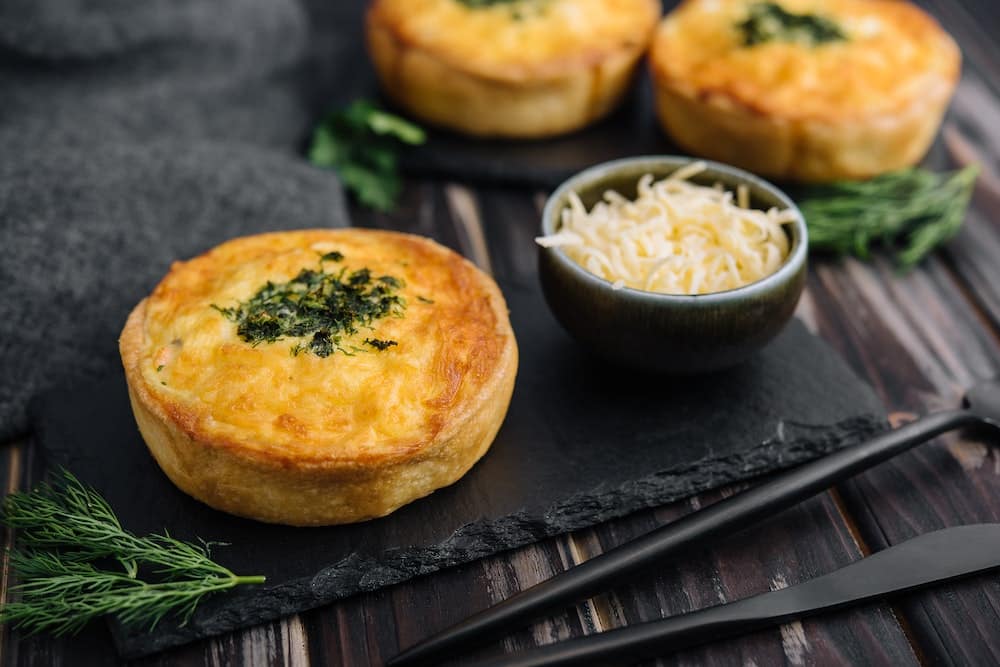How to Craft a Delicate French Quiche Lorraine with a Silky Custard and Crisp Pastry?

The smell of a quiche Lorraine just out of the oven is a feast for the senses. The golden crust encases a creamy custard filled with tasty morsels of bacon. It’s a French classic that never goes out of style. You might think making this dish is a daunting task, but with the right guidance, you can recreate this culinary masterpiece in your own kitchen. In this tutorial, we will walk you through a step-by-step process on how to craft a delicate French Quiche Lorraine with a silky custard and crisp pastry.
Crafting the Perfect Quiche Dough
The first step in making a quiche is crafting the dough. This will serve as the base of your pie, providing a crunchy contrast to the creamy custard filling. This quiche dough recipe is simple and requires only four basic ingredients: flour, butter, salt, and water.
Have you seen this : What you need to know about the le creuset mystery box
To begin, you will need to cut your butter into small pieces. Make sure that the butter is cold as this will help to keep your dough flaky. In a large bowl, combine your flour and salt. Add the butter to this mixture and use your fingers to rub it into the flour. This process is called "cutting in" and should result in a mixture that resembles coarse bread crumbs.
Next, gradually add water to your mixture until it forms a dough. Be careful not to overwork your dough as this can make it tough. Once your dough has come together, wrap it in cling film and refrigerate for at least 30 minutes. This allows the gluten in the dough to relax, making it easier to roll out later.
Additional reading : Can You Prepare a Gourmet Smoked Salmon Blini with the Perfect Accompaniments?
Preparing the Bacon and Cheese
While your dough is chilling, you can begin preparing your filling. Quiche Lorraine is traditionally made with bacon and cheese, and the quality of these ingredients can make a big difference in your final dish.
Choose a thick-cut bacon for this recipe, as it will hold up well in the custard. Cook your bacon in a pan until it is crispy, then drain it on a paper towel to remove any excess grease. Once your bacon has cooled, chop it into small pieces.
Next, choose a good-quality cheese. Swiss or Gruyere cheese works well in a quiche Lorraine. Grate your cheese and set it aside. By the time you have finished preparing your bacon and cheese, your dough should be ready to roll out.
Assembling and Baking the Quiche
Now that your dough has had time to chill, it’s time to roll it out. On a lightly floured surface, roll your dough into a circle that is slightly larger than your pie pan. Carefully transfer the dough to your pan, pressing it into the bottom and up the sides. Trim any excess dough from the edges, and prick the bottom of the crust with a fork. This will prevent the dough from puffing up as it bakes.
Next, it’s time to assemble your quiche. Sprinkle the cooked bacon and grated cheese evenly over the bottom of your pie crust. In a separate bowl, whisk together your eggs, cream, salt, and pepper. This mixture will form your custard. Pour this over the bacon and cheese in your pie crust.
Finally, it’s time to bake. Preheat your oven to 375 degrees Fahrenheit and bake your quiche for about 35-40 minutes, or until the custard is set and the top is golden brown. Let your quiche cool for a few minutes before slicing and serving.
Fine-tuning Your Quiche Baking Skills
Baking a quiche might seem straightforward, but there are a few tips and tricks that can help ensure your success.
First, be sure to preheat your oven. This ensures that your quiche will begin baking as soon as it enters the oven, which helps to set the crust and prevents a soggy bottom.
Second, don’t overfill your crust. It can be tempting to add extra bacon or cheese, but overfilling can lead to a quiche that is soggy or doesn’t set properly. Stick to the recipe amounts for the best results.
Third, be patient. Quiche is not a dish that can be rushed. It needs time to bake and set properly. Resist the urge to increase the oven temperature or shorten the baking time. The results will be worth the wait.
Variations of the Classic Quiche Lorraine
Once you’ve mastered the classic quiche Lorraine, you can experiment with different variations. The beauty of a quiche is that it’s a blank canvas, and you can alter the recipe to suit your tastes.
For instance, you could replace the bacon with smoked salmon or cooked shrimp for a seafood twist. You could also add sautéed onions, mushrooms, or bell peppers for a veggie-packed quiche. The possibilities are endless.
Remember, the quality of your ingredients will make a big difference in your final dish. Choose high-quality cheeses, creams, and proteins. Also, always make sure to use fresh eggs. They will provide your custard with a rich flavor and a beautiful color.
By following this tutorial, you can craft a delicate French Quiche Lorraine with a silky custard and crisp pastry. Happy baking!
Baking the Perfect Pie Crust
The secret to any great quiche is a crisp, flaky pie crust. After preparing your quiche dough and allowing it to rest for a minimum of 30 minutes, it’s time to start baking that perfect crust.
Start by rolling out your dough on a floured surface, aiming for a circle slightly larger than your pie dish. Gently lay the dough into the dish, pressing it evenly into the bottom and sides. Trim off any excess dough and use a fork to prick the bottom of the pastry shell. This process, called docking, will prevent the crust from puffing up and creating uneven surfaces.
Next, it’s time for the blind bake. Blind baking is a method used to partially bake the pie crust before adding the filling, thus ensuring a well-cooked bottom crust. The process also helps to prevent the crust from becoming soggy once the custard filling is added.
To blind bake, preheat your oven to 375 degrees Fahrenheit. Line the pie crust with parchment paper and fill it with pie weights. If you don’t have pie weights, dried beans or uncooked rice can be used as a substitute.
Place the pie dish on a baking sheet and bake for about 15-20 minutes, until the edges are just starting to turn golden. Remove the weights and parchment, and bake for an additional 5 minutes, or until the bottom is lightly golden. Allow the crust to cool to room temperature before filling.
Deciding on Your Quiche Add-Ins
Once you’ve mastered the basics of making a quiche Lorraine, you can start to play around with different add-ins to customize the dish to your liking. Remember, adding too much of any ingredient can result in a soggy quiche, so it’s important to use moderation.
You could, for example, follow Melissa Clark’s suggestion and add some caramelized onions to the bacon and cheese for a richer flavor. If you’re a fan of seafood, smoked salmon or cooked shrimp can replace the bacon for a delightful twist.
For vegetarians, replace the bacon with sautéed mushrooms, spinach, or bell peppers. You could even create a Mediterranean version with crumbled feta cheese, sundried tomatoes, and olives.
If you prefer a gluten-free option, consider replacing the flour in the pie crust with almond meal or a gluten-free flour blend.
Whatever variations you choose, remember the golden rule: use fresh, high-quality ingredients for the best results. And, as always, make sure your eggs and cream are at room temperature before whisking them together.
Wrapping Up: The Beauty of Quiche Lorraine
In conclusion, crafting a delicate French Quiche Lorraine is an art that takes some practice, but with the right guidance and a little patience, anyone can master it. From the crisp, flaky pie crust to the luxurious, silky custard filling, every bite of this classic dish offers a taste of French cuisine.
Whether you’re serving it for a leisurely breakfast, a brunch get-together, or a light dinner, Quiche Lorraine is always a hit. Its versatility allows for endless variations, making it an exciting dish to experiment with.
Don’t be intimidated by the prospect of making your own quiche from scratch. Embrace the process, learn from each attempt, and soon you’ll be crafting quiches that rival those in any French bakery. Bon Appétit!
